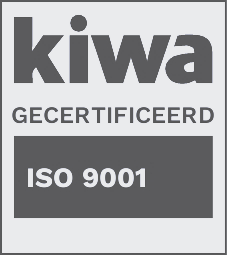Your business is doing extremely well: your local customer base grows steadily, your advertising consists mostly of word-to-mouth, and you continuously invest in innovation and service to keep your products up-to-date and competitive.
However, you feel that the market in which you operate does not have much more room left for you to grow, and you are nowhere near reaching your full potential. Moreover, you have heard that the market in your neighboring country really shows high potential for you to sell your products. Since you sell most of your products via your webshop, you know that there is no need to open a physical office, so the cost of doing business in that country should be pretty low, shouldn’t it?
As your investigation into the new market progresses, you start looking into the business case for entering the market, collecting the necessary data on operating costs, regulation, and, of course, the translation of your website. Everything looks positive until you study the price offers from the translation companies. The multi-digit prices make your head spin, and you start telling yourself that as English is the world’s main business language, many people probably expect your website to be in English anyway. And it would be silly to invest so much money in a translation of which the hard cash return is not yet proven, right?
Well, not really. Research by the Common Sense Advisory, a Massachusetts-based market research company, has shown that consumers have a strong preference for websites written in their own language, whether they are buying products for themselves or for their companies.
They want product information and purchase conditions to be clear, and most of all, they want to be able to interact in their mother tongue in case they have a question or a problem. They want to be helped by someone who feels like ‘one of them’, even if this person is virtual.
And the best thing is: they are willing to pay more if you provide this language incentive. According to the Common Sense Advisory Survey of language preferences, nearly one in five Europeans never browse in a language other than their own, and 42% of respondents stated that they never buy products and services in other languages.
Consequently, there is a sound business case to be made for the translation of your website, and its adaptation to your target market’s cultural idiom. In this context, we also like to refer to Nelson Mandela’s wise words:
If you talk to a man in a language he understands, that goes to his head. If you talk to him in his language, that goes to his heart.
So if you want to expand your business across borders, you need to embrace the language hurdles that come with that. We can feel the multi-digit numbers rushing to your head again, so let's put the issue of the cost or -as we prefer to call it- the investment, into perspective. We will also make some suggestions on how you can keep the investment reasonable… in a smart way.
The initial investment vs the subsequent investments
When you start from scratch, there is a lot of content to be translated. If you are working with a professional translation company, they will probably offer you the possibility to build a Translation Memory for you. In this Memory, the translation of words and text fragments will be stored. Thanks to this, with every translation you order, the price will be cheaper, as you will not be charged twice for the translation of one and the same text segment. The initial investment will be as substantial as the subsequent investments will be limited.
There is more than all or nothing
If you sell several products, the chances are that you are not planning on launching all of them at the same time in the country that you’ve set your eyes on. Take the time to thoroughly analyse and prioritise what information is essential for the launch of your product, and hence has to be translated, and what information can be translated later or does not need to be translated at all.
Choose a reliable Language Service Provider (LSP)
Take the time to find and choose a reliable Language Service Partner that understands your needs and develops a solution that is right for you. If you need some advice on what questions to ask and what to be mindful of, read our blog post ‘9 Questions to ask your future Language Service Provider’.
A made-to-measure translation workflow
If you involve your language service provider from the outset, they will not only help you to translate or localise your content. They will look at your needs and budget, and develop a workflow that fits your business like a glove. Depending on the type of content and the frequency of content changes, they can automate certain parts of the workflow to a greater or a lesser extent, which will have an impact on the resources you have to allocate. Platforms like the Presence Translation Studio can help you track the progress of your translations and the budget you spend on them.
If you take the necessary time to analyse your translation requirements and to find the right Language Service Partner you will be able to design a translation process that suits both your content and marketing needs, and does not wreak havoc on your budget. And when that foreign business comes rolling in, you will forget all about the initial investment and start looking towards new unexplored territories.


.png)
.svg)
.png)
.svg)

%20(2).jpg)
.jpg)
.jpg)









.png)


.png)
